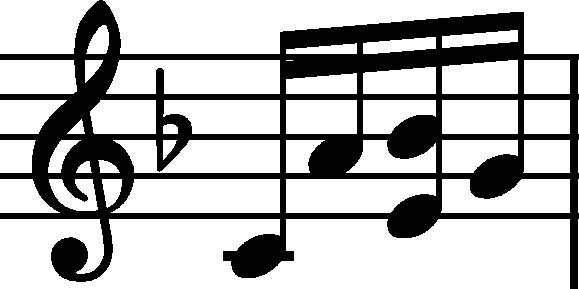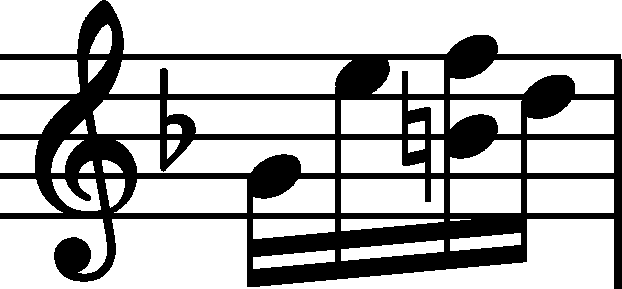



Pitch
|
b. 2-6
|
composition: Op. 28 No. 23, Prelude in F major
..
Thanks to the crossings-out and added notes in b. 2 and 6 visible in A, we can reconstruct the initial version of the last beat of these bars as category imprint: Corrections & alterations; Source & stylistic information issues: Corrections in A , Deletions in A , Main-line changes |
||||||||
|
b. 4-5
|
composition: Op. 28 No. 23, Prelude in F major
..
We give Chopin's fingering written into FED in the main text. However, nothing indicates that the fingering in EE could have come from Chopin. category imprint: Differences between sources issues: Annotations in teaching copies , EE revisions , Annotations in FED |
||||||||
|
b. 4
|
composition: Op. 28 No. 23, Prelude in F major
..
The crossed-out g2 note before the final a2 note, which can be seen in A, and the e2 note, added clearly later, prove that the last 3 semiquavers in the bar were initially f2-g2-a2. category imprint: Corrections & alterations; Source & stylistic information issues: Corrections in A , Deletions in A , Main-line changes |
||||||||
|
b. 10
|
composition: Op. 28 No. 23, Prelude in F major
..
EE repeats a category imprint: Differences between sources issues: EE revisions , EE inaccuracies |
||||||||
|
b. 13
|
composition: Op. 28 No. 23, Prelude in F major
..
The version of GE resulted from an erroneous interpretation of the illegible correction concerning the pitch of this note in FC – the copyist most probably first wrote g1 and then turned it into f1, as a result of which both the 2nd line and the 1st space are covered. A correction (crossing-out) is also visible in A, in which, however, it almost certainly concerned rhythm – Chopin pondered whether to write the discussed note as a minim. The pencilled correction of the wrong clef (bass) visible in FC at the beginning of the bar – it opens the line in this manuscript – as well as a possible crossing-out of one of the notes (rather the bottom one, hence f1) on the 2nd L.H. quaver were performed by a later owner of FC, i.e. Hermann Scholtz. category imprint: Graphic ambiguousness; Differences between sources; Corrections & alterations; Source & stylistic information issues: Corrections in A , Errors resulting from corrections , Foreign hand additions in manuscripts , Deletions in A , Inaccuracies in FC , Alterations in CF |

 and
and  . The idea of changing it probably arose when Chopin was writing b. 6; afterwards, he introduced a respective correction in b. 2. It is proven by the notation of an analogous figure in b. 10, in which the final version was written right away, without corrections.
. The idea of changing it probably arose when Chopin was writing b. 6; afterwards, he introduced a respective correction in b. 2. It is proven by the notation of an analogous figure in b. 10, in which the final version was written right away, without corrections. before b in the trill's ending, most probably by mistake.
before b in the trill's ending, most probably by mistake.